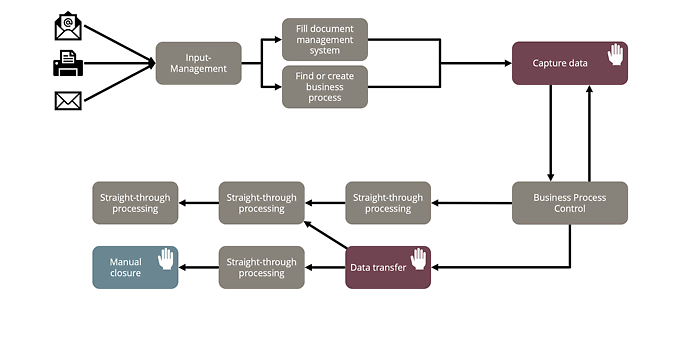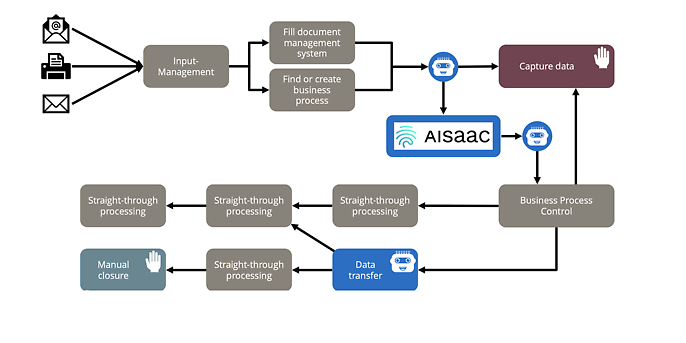20. January 2022 By Allan Linke and Ferhat Yildiz
RPA as an AI enabler – software robots transport you to a harmonised system landscape
The switch to mobile working during the global pandemic was another wake-up call for many companies to invest more in digitalisation. Digital solutions had to be created or expanded within just a few days. Many manual processes had to be rethought and converted to digital in a very short time. We can see that digitalisation is much more than receiving invoices as PDFs, for example. A complete integration of all company processes into a few central systems often requires very high investments and can rarely be realised in a short amount of time.
At this point, the industry standard solution would be to implement a traditional interface to the various systems to facilitate automatic data exchange. However, interfaces often require detailed knowledge of the system processes and adjustments at program level. Especially in an established system landscape, the realisation of such interfaces is often made difficult due to incomplete documentation and a lack of expertise. Work usually continues true to the motto ‘never change a running system’ as a consequence. Which means that staff often spend hours doing tasks just to satisfy the system and copying data.
Right where Robotic Process Automation comes into play
One possible solution to this situation is robotic process automation (or RPA). Many of our customers are increasingly using RPA to automate processes and connect existing systems. RPA is a technology that can operate systems at the user level and therefore requires minimal system customisation or none at all. A fragmented IT landscape can be put together within a very short time and free space for employees can be created, just like using gaffer tape. Subsequently, either RPA can be established as a permanent solution or alternatives can be worked out.
The RPA tools on the market are now mature and can be used both in the cloud and on-premises. In the German-speaking world, three providers in particular have become established, and we come across them again and again: UiPath, Blue Prism and Automation Anywhere.
However, the market is still growing strongly and even larger software providers such as Microsoft (Power Automate Desktop) and SAP (SAP Intelligent Robotic Process Automation) are now represented with their own solutions. Each solution has its own strengths and weaknesses, which is why attention should already be paid to which solution best fits the existing systems and processes in the company when selecting a tool.
Particularly in the case of insurance companies, there is great potential for optimisation through the use of RPA. Often data has to be transferred manually between several systems. The processing of damage reports is one such process affected by this. A report can be received in a wide variety of formats, and when entering the data into the system, it requires a particularly high level of manual effort.

This step can be almost completely automated with Aisaac, our AI for dark processing without any media disruptions. Aisaac can analyse a wide variety of documents and evaluate them in relation to processes. When manual processing is eliminated, it reduces processing times. Your customer service can be improved as there will be more time for activities that provide added value.
However, the connection to existing systems poses a hurdle sometimes – one that can be overcome using RPA. The added value of Aisaac in conjunction with RPA can be demonstrated without the need for system adjustments as part of a proof of concept. Another advantage is that RPA can also be used to serve other systems in subsequent processes without the need to connect interfaces.

More and more insurance firms are now turning to RPA to automate their processes cost-effectively. Through process automation, insurance firms are able to reduce service time while improving customer satisfaction. At the same time, the elimination of repetitive tasks can reduce costs and increase employee satisfaction. The trend towards digitalisation will continue even after the global pandemic, and effective and affordable solutions for integration will still be in demand. We have only highlighted one deployment scenario of RPA in this blog post. If you have any questions or want to learn more about low code, AI, RPA and/or intelligent process automation, please feel free to get in touch with us.
Would you like to learn more about exciting topics from the world of adesso? Then check out our latest blog posts.


